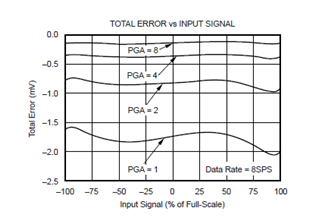Hello,
I'm missing the specification of ENOB in the ADS1100 datasheet. Have I overlooked something?
This is the explanation that I came up with:
The ADS1100 has a relatively low data rate (8SPS to 128SPS). Therefore it is suitable for acquiring DC-like signals only, e.g., the output of a thermistor. It is my understanding that ENOB is a figure of merit that conveys AC performance of a data converter. As the ADS1100 is not suited for AC signals, this value is not specified.
Does that make sense?
On the other hand, data converter datasheets usually contain noise histograms to show DC performance of an ADC. I could not find noise histograms in the ADS1100 datasheet.
Why is this?
Thanks.
Best regards,
Dan


